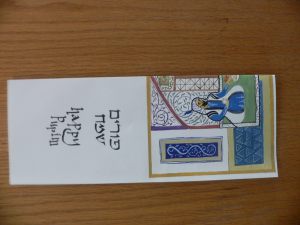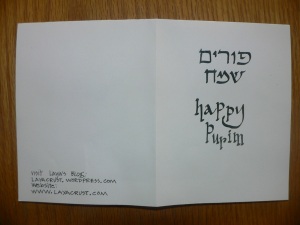It’s Purim next week, the holiday on which we read the Scroll of Esther. The story of Esther takes place around 480 BCE in Persia. Queen Esther and her Uncle Mordecai foil Haman’s plans to exterminate the Jews of Persia. The Shabbat before Purim is called Shabbat Zachor- the Shabbat of Remembrance. On this special Shabbat we read a section from the Torah about the evil King Amalek. Amalek instructed his army to attack the Children of Israel, specifically the defenseless and the weak, as they walked through the desert after leaving Egypt. Amalek is identified as the ancestor of Haman, the villain in the Purim story.
The haftarah recounts a poignant story about King Saul . The prophet Samuel tells King Saul that he is to remember what Amalek did to B’nei Yisrael (the children of Israel). Saul is to destroy ALL the Amalekites, the young and the old, their animals, and all their possessions. King Saul gathers his warriors, and they go to war.
Saul and his warriors flatten the towns, and kill the inhabitants and their cattle- but he spares Agag the Amalekite king. King Saul’s soldiers spare the choicest sheep, intending to offer some as sacrifices o God. to offer as sacrifices to God. When God sees what has happened, He instructs Samuel to depose King Saul.
The text is powerfully written. Saul, a man with a good heart, does not carry out God’s instructions. Samuel reminds him, “Though you are little in your own sight were you not made head of the tribes of Israel? And the Lord anointed you King?…” Samuel turns his back on the broken king. As Samuel walks away Saul falls to the ground and grabs Samuel’s cloak. The cloak rips in his hand, and Samuel tells Saul, “The Lord has ripped the kingdom of Israel from you this day and given it to a neighbour of yours that is better than you…”
It is a heartbreaking story of a fallen King. The most tragic element is that Saul had never wanted to be king. He wanted to live a simple life but monarchy was thrust upon him. He wasn’t a natural leader. He was a follower. In the battle against the Amalekites Saul he followed the desires of his warriors rather than the commandment of God.
In this week’s maftir (the last paragraph of the Torah reading) we read the commandment to blot out Amalek’s name. We read this just before Purim because tradition tells us that Haman was Amelek’s descendant. As we read we are reminded that in every generation there rises an enemy whom we must fight. We are reminded to have faith in God and listen to God’s teachings.
Read the story. It’s another exciting and emotional incident in our canon. And it’s OUR story. Shabbat Shalom.and have a great Purim.
Laya

ILLUMINATIONS, An Exploration of Haftarah through Art and History is a book of all the haftarah pictures you have seen in my blog. It was published in October and released on November 24, 2022. It boasts 82 full-colour pictures and a rich commentary that accompanies each painting. For more information or to order a book go to https://www.haftarah-illuminations.com/ or to haftarah-illuminations.com




 I’m excited to introduce you to the newest member of my family. ILLUMINATIONS, An Exploration of Haftarah through Art and History is a book of all the haftarah pictures you have seen in my blog. It was published in October and released on November 24, 2022. It boasts 82 full-colour pictures and a rich commentary that accompanies each painting. For more information or to order a book go to
I’m excited to introduce you to the newest member of my family. ILLUMINATIONS, An Exploration of Haftarah through Art and History is a book of all the haftarah pictures you have seen in my blog. It was published in October and released on November 24, 2022. It boasts 82 full-colour pictures and a rich commentary that accompanies each painting. For more information or to order a book go to 




















